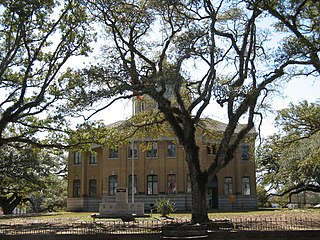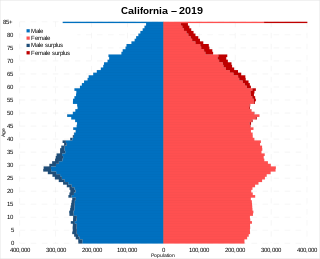List of U.S. communities with African-American majority populations may refer to:
List of U.S. communities with African-American majority populations may refer to:

Wilkinson County is a county located in the southwest corner of the U.S. state of Mississippi. As of 2020, its population was 8,587. Its county seat is Woodville. Bordered by the Mississippi River on the west, the county is named for James Wilkinson, a Revolutionary War military leader and first governor of the Louisiana Territory after its acquisition by the United States in 1803.

Fayette County is a county located in the north central portion of the U.S. state of Georgia. As of the 2020 census, the population was 119,194, an increase from 106,567 in 2010. Fayette County was established in 1821. The county seat, Fayetteville, was established in 1823. Much of Fayette County is bordered on the east side by the Flint River.

Atkinson County is a county located in the southeastern region of the U.S. state of Georgia. As of the 2020 census, the county's population was 8,286. The county seat is Pearson. The county was formed in 1917 from parts of Coffee and Clinch counties. It is named for William Yates Atkinson, Democratic governor of Georgia from 1894 to 1898. In 2003, it had the highest illiteracy rate of any U.S. county at 36%.
The terms multiracial people or mixed-race people are used to refer to people who are of more than one race and the terms multi-ethnic people or ethnically-mixed people are used to refer to people who are of more than one ethnicity. A variety of terms have been used both historically and presently for mixed race people in a variety of contexts, including multiethnic, polyethnic, occasionally bi-ethnic, Métis, Muwallad, Colored, Dougla, half-caste, ʻafakasi, mestizo, mutt, Melungeon, quadroon, octoroon, sambo/zambo, Eurasian, hapa, hāfu, Garifuna, pardo, and Gurans. A number of these terms are now considered offensive, in addition to those that were initially coined for pejorative use. "Melezi" are called the offspring of Muslim Romani men and woman of host populations.
The following are links to lists of United States cities in which a majority of the population is not white organized by majority racial group. The US census officially recognizes six racial categories: White American, Black or African American, Native American and Alaska Native, Asian American, Native Hawaiian and Other Pacific Islander, and people of two or more races. It should not, however, be inferred that every city not on one of the lists below has a white majority.

Zambo or Sambu is a racial term historically used in the Spanish Empire to refer to people of mixed Amerindian and African ancestry. Occasionally in the 21st century, the term is used in the Americas to refer to persons who are of mixed African and Indigenous American ancestry.
The following are links to lists of United States cities with large ethnic minority populations.

White Americans are Americans who identify as white people. This group constitutes the majority of the people in the United States. According to the 2020 census, 71%, or 235,411,507 people, were White alone or in combination, and 61.6%, or 204,277,273 people, were White alone. This represented a national white demographic decline from a 72.4% white alone share of the U.S. population in 2010.

The United States has a racially and ethnically diverse population. At the federal level, race and ethnicity have been categorized separately. The most recent United States census recognized five racial categories, as well as people who belong to two or more of the racial categories. The United States also recognizes the broader notion of ethnicity. The 2000 census and 2010 American Community Survey inquired about the "ancestry" of residents, while the 2020 census allowed people to enter their "origins". The Census Bureau also classified respondents as either Hispanic or Latino, identifying as an ethnicity, which comprises the minority group in the nation.

Florida's 3rd congressional district is an electoral district of the United States House of Representatives located in Florida. It presently comprises a large section of north central Florida, including the entire counties of Alachua, Baker, Bradford, Columbia, Dixie Gilchrist, Hamilton, Levy, Suwannee, and Union, along with the majority of Lafayette and Marion County. The city of Gainesville is in the district as well as part of Ocala.

California is the most populated U.S. state, with an estimated population of 38.9 million as of 2023. It has people from a wide variety of ethnic, racial, national, and religious backgrounds.

Caribbean Americans or West Indian Americans are Americans who trace their ancestry to the Caribbean. Caribbean Americans are a multi-ethnic and multi-racial group that trace their ancestry further in time mostly to Africa, as well as Asia, the Indigenous peoples of the Americas, and to Europe. As of 2016, about 13 million — about 4% of the total U.S. population — have Caribbean ancestry.
Black Hispanic and Latino Americans, also called Afro-Hispanics, Afro-Latinos or Black Hispanics, or Black Latinos are classified by the United States Census Bureau, Office of Management and Budget, and other U.S. government agencies as Black people living in the United States with ancestry in Spain, Portugal or Latin America and/or who speak Spanish, and/or Portuguese as their first language.
South African Americans are Americans who have full or partial ancestry from South Africa. As of 2021, there were approximately 123,461 people born in South Africa who were living in the United States.

Adherents of Islam constitute the world's second largest religious group. A projection by the PEW suggests that Muslims numbered approximately 1.9 billion followers in 2020. Studies in the 21st century suggest that, in terms of percentage and worldwide spread, Islam is the fastest-growing major religion in the world, mostly because Muslims have more children than other major religious groups. Most Muslims are either of two denominations: Sunni or Shia. Islam is the majority religion in several subregions: Central Asia, Western Asia, North Africa, West Africa, the Sahel, and the Middle East. The diverse Asia-Pacific region contains the highest number of Muslims in the world, easily surpassing the combined Middle East and North Africa.